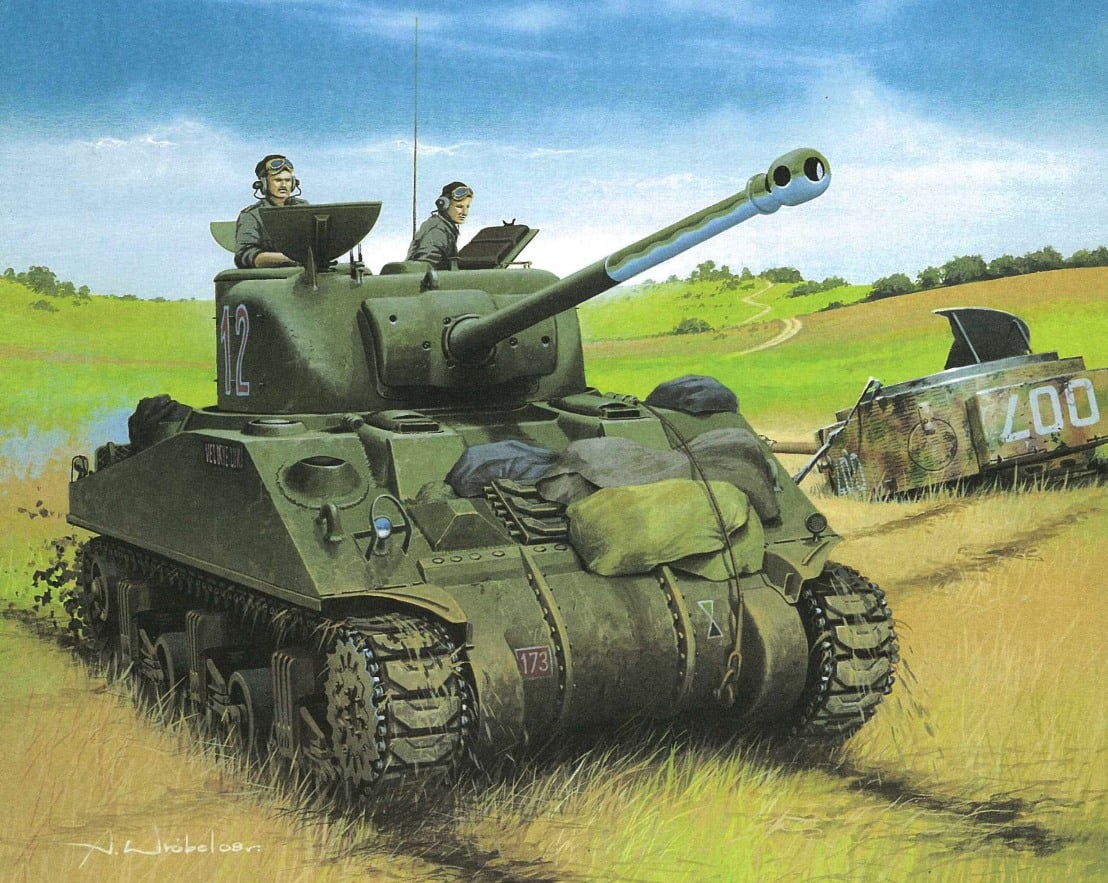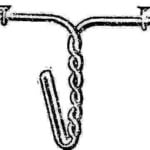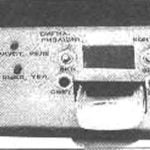 The defeat of the English troops on the European continent and the loss of almost two thirds of their tanks forced the British to seek the assistance of the United States. To make up for losses due to own production, the British was not possible.
The defeat of the English troops on the European continent and the loss of almost two thirds of their tanks forced the British to seek the assistance of the United States. To make up for losses due to own production, the British was not possible.
At the end of June 1940 England to address this question was referred to the transatlantic ally a special mission. Originally it was planned to develop the production of British tanks, in particular, “Matilda”, the factories in the United States. However, this option did not cause the Americans any enthusiasm, it could only go on purchasing military vehicles. This was facilitated by the adoption of March 11, 1941 law the lend-lease act, which the same day was extended to the UK.
The British were primarily interested in medium tanks, but their production in the United States has not been deployed, so the only tank that they really could get, became easy M3.
The supply tank received in the UK the name of Stuart, began in the spring of 1941 and continued until the end of the war, and supplied almost all versions from M3 to m5a1 variants. M3 medium tanks (Grant and Lee) began arriving in British troops in 1942 and used extensively in North Africa. The most massive American (and only American) tank in the British army became the M4 Sherman.
Its serial production began in February 1942. With the end of the summer of the same year he was shipped to the UK. During the Second world war, she received 17 181 machine M4 various modifications.
The first few hundred M4A1 and M4A2 arrived in North Africa in August — September 1942. Immediately upon arrival “Sherman” was sent to the British workshops at Tel-El-Kebira and El-Abassia, where they were dosnateli in accordance with the requirements of the theater of war and the British army. All American tanks had received an English radio station number 19, boxes for spare parts and equipment English model, smoke grenade launchers. The tanks that fought in North Africa, in addition, equipped with wings of special shapes, reduces the cloud of dust from caterpillars. Of course, quite different than in the United States army, was their coloration and markings.
The second battle of El Alamein 23 October 1942 in the first lines of the 8th British army of General Montgomery was 251 tank “Sherman”. Most of them were in the 1st armored division, the regiments of which — the 9th lancers (9th Lancers), 10th hussars (10th Hussars) and the Queen’s Hunting regiment (Queen’s Bays) — there were about 90 “Shermans”. Tanks of this type were part of the 10th Panzer division, the 24th and the 9th separate armored brigades. And part of the “Sherman” were equipped with American crews reclaimed the theater of operations.
The battle of El Alamein, which became a turning point for the entire North African campaign was won by the British largely due to the large number of “Shermans” in the army.
To the beginning of the battle, 165 British tanks “Grant” Germans opposed to 74 Pz.IIIJ and 27 PZ.IVF2 with a long-barreled 50 – and 75-mm guns, capable of penetrating the armor of “grants”. Joining the battle of the two hundred and fifty even more powerful and advanced tanks for the Germans was a complete surprise and finally turned the tide in favor of the English: gun tankov most of the German Africa corps were powerless against the new American military vehicles.


Cruiser tank “Sherman Firefly”:
1 — 17-pounder gun; 2—camouflage net; 3 — hatch for firing personal weapons (brewed); 4 armored box for radio; 5 — covers, tarpaulin; 6 — drawer for equipment; 7 — guide wheel; 8 — truck suspension; 9 — driving wheel; 10 — the bulwarks; 11 — socket for mounting the antenna base (in the case of setting the second radio station); 12 — Luc helper driver; 13 — driver’s hatch; 14 — the fan cover compartment; 15 — sight; 16 — commander’s hatch; 17 — a fan cover of the fighting compartment; 18 — access doors for access to flooded fuel cap; 19 — bracket barrel of the gun in its stowed position; 20 — a hatch for access to the fuel filler neck of the fuel tank auxiliary charging unit; 21 — Luke loader; 22 — a fan cover of the tower; 23 — set exchange machine gun (brewed); a 24 — spare tracks; 25 — antenna radio No. 19; 26 — bracket for mounting large-caliber anti-aircraft machine gun
Soon “Sherman” different modifications became major in the British army, gradually displacing other American and most British tanks.
Besides the mentioned equipment to the British standard “Sherman” virtually no alterations in the British army were not exposed. The only exception is weapons of the tanks of this type 17-pounder (76.2 mm) gun with high initial velocity armor-piercing projectile, the so-called “long hand”.
The first copies of field anti-tank 17-pounder gun was made in March 1941 and in August entered the army. Baptism of fire they received in North Africa in the winter of 1942/43 year and proved itself from the best side. In the framework of the policy of unification of weapons held by the British military authorities, provided for the establishment of a similar tank gun. It was planned to install the tanks, “Cromwell” with long body and chassis and a new turret. These machines received the name “Challenger”. However, by the summer of 1943 it became apparent that due to numerous technical problems to deploy the mass production of the “Challenger” and, consequently, produce enough of them to start landing on the continent will not succeed.
Then the British and turned their views on “Sherman”, and the earliest modification, armed with 75-mm gun M3 and the least able to deal with heavy German tanks. However, there were doubts whether to install long-barreled gun in a relatively small regular tower American tank. Tests conducted on 26 December 1943 in Volvics.com Arsenal, has placed all points over i. Anti-tank 17-pounder gun was well balanced: the trunk is light and compact, but heavy in the breech allowed to place it in the axles of the old guns. Installation was made easier by the large — 1730 mm — diameter tower ring, “Sherman”. It took, however, a new cast of mask-set, covered with movable cast booking. Because when driving on rough terrain the magnitude of the vertical oscillation of the trunk was more than the 75-mm gun, had to dismantle the gyroscopic gun stabilizer.
New guns were of two types — the Mk IV and Mk VII. They have minor differences in the design of the lifting mechanism. The latter was allowed to direct the instrument in the range from minus 5° to plus 20° vertically. Rotate the tower manually or hydroelectric turning mechanism. In the stowed position, the trunk was fixed by using the bracket mounted on the rear of the body (i.e. trunk). While mounted on the hull of the regular mounting bracket 75 mm gun in its stowed position has been eliminated. On the left side of the gun in the musk-plant is paired 7.62-mm machine gun Browning М1919А4, and the right — telescopic sight with a variable 3 – or 6-fold increase.
Station No. 19 issued outside the case and placed in a special armored box welded to the turret. Back sheet of the box had a thickness of 64 mm, side — 51 mm, bottom and removable roof 25 mm. in Addition to the release of volume inside the tower, this decision contributed to its better balance.
The crew was reduced to four people from its membership removed the helper of the driver, and the place was placed the extra ammunition. Coursework Browning machine gun was removed (there was nobody to shoot), and his loophole is sealed. In the roof of the tower, to the left of the commander’s turret, landing loader was slotted rectangular hatch facilitates the loading of ammunition.
The ammunition consisted of 77 unitary shots of caliber 76.2 mm. Five shots of the first stage was located directly under the gun on a rotating police of the fighting compartment, 14 in the front of the case right at the former place of the assistant driver, the other 58 — in boxes, the so-called dry stowage under the Polycom crew compartment.
For shooting used armor-piercing projectiles with armor-piercing ballistic tip, which had an initial speed of 908 m/s From a distance of 900 meters this projectile pierced the armor plate thickness of 130 mm, angled 30° to the vertical. From August 1944 the ammunition also were included, though in limited quantities, the new piercing projectiles APDS or SVDS. The mass of the projectile was 3,588 kg, mass of the tungsten core — 2,495 kg Projectile leaves the barrel at a speed of 1200 m/s and at a distance of 900 m punched 193-mm armor plate placed at an angle of 30° to the vertical. In General, the 17 pounder gun had some of the best characteristics of armor penetration than the German 88 mm KwK 36 and the American 90 mm caliber, and markedly inferior to only 88 mm KwK 43 of the Tiger II heavy tank.
To upgrade the 17-pounder gun used modifications M4, M4 Composite Hull with cast front housing part (often called Sherman Hybrid), M4A1 and mainly M4A4. The initial order of the Ministry of war issued in January 1944, included 2100 units. Each tank platoon was supposed to get two such machines. This was planned to equip their British, canadian and Polish armored units intended for fighting on the European continent. Work on upgrading was held at the Royal munitions factory in Leeds and Volvics.com Arsenal near London. Until July 31, 1944, it was converted 699 tanks.
Baptism of fire they received during the fighting in Normandy, where he got his nickname Firefly (“Firefly” “the bug-Firefly”, “Firefly”). It is difficult to explain such a frivolous name, this combat tank. However, another meaning of this English word — “a thick yellowish-red light”. It is possible that this color flash gave the shot a 17-pounder gun.
On the day the D — day landings in Normandy all the English regiments of tank divisions and brigades (excluding manned by “Cromwell” the 7th Panzer division and the reconnaissance regiments of the 11th and the Guards armored divisions and army tank brigades with “Churchill”) were armed with “Sherman”. In these parts, and the parts with the tanks of English manufacture, were in the 12 “fireflies”. The line, “Sherman” they were easy to distinguish on the box for the radio and the long gun barrel, topped with a characteristic pear-shaped muzzle brake.
By 24 June 1944, in the heat of battle in Normandy, in a linear tank units of the 21st army group (so called the troops of His Majesty in North-Western Europe), there were 288 of tanks Sherman Firefly, and by the end of the year, there were 728.

Otherwise look British, canadian, new Zealand, South African and Polish troops who fought in Italy. This theater of operations was considered minor, and therefore there was enough to have only one Firefly per platoon. At the end of 1944 on the Italian front, fought only 77 “Shermans” with the 17th fountoukli. In the English armies operating in the far East, the fighting machines of this type whatsoever.
By January 1945 the order of the war Ministry of great Britain had increased to 3100 Sherman Firefly, of which at that time was made in 1794 units (mostly variants of the IC and VC) and the rate of conversion was 200 units per month. May 31, 1945 the order was again increased to 3260 war machines (converted on that date 2139), but after the Second world war, this order annulled.
And what about the Americans? They also tried to increase the firepower, “Sherman”, setting him in may 1944, its 76 mm gun M1, coupled with a new tower T23. The tool is in its characteristics inferior to the 17-funtovku. Suffice it to say that American armor-piercing shell with ballistic tips and had an initial speed of 793 m/s, and the sabot — 1037 m/s.
However, Americans are not used until the end of the modernization possibilities inherent in the “Sherman”. The diameter of the tower overhead and the width of the turret boxes, it is allowed to place a tower of the tank the M26 Pershing with 90 mm gun. This study was conducted, but at the end of the war, the U.S. military apparently put on the “Sherman” cross, planning serial production of the new M26 tank, designed to become the basic model in the new family for the long term. Strengthening the arms, “Sherman” was considered inappropriate. Then nobody could assume that while the M26 will take its place in museums, “Sherman” vengeance will take part in the hostilities and the question of their upgrading will have to come back. However, not in USA not in the UK. But that’s another story.
The designation of modifications of Taikov series M4 in the British army
Sherman I—M4 set 2096 units;
Sherman IB — M4 (105), delivered 593 units;
Sherman IC — M4 English rearmed with 17-pounder gun;
Sherman II—M4A1 posed 942 units;
Sherman IIA — M4A1(76)W, delivered 1,330 units;
Sherman IIC — M4AI, English rearmed with 17-pounder gun;
Sherman III —M4A2, delivered 5041 unit;
Sherman IIIA — M4A2(76)W, delivered five units;
Sherman IV — М4АЗ delivered seven units;
Sherman V — M4A4 set 7167 units;
Sherman VC — M4A4, English rearmed with 17-pounder gun.
M. BARYATINSKY



